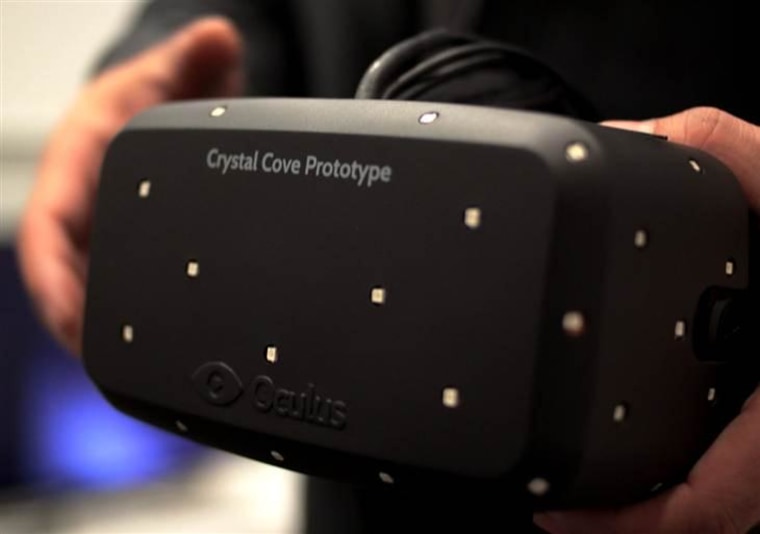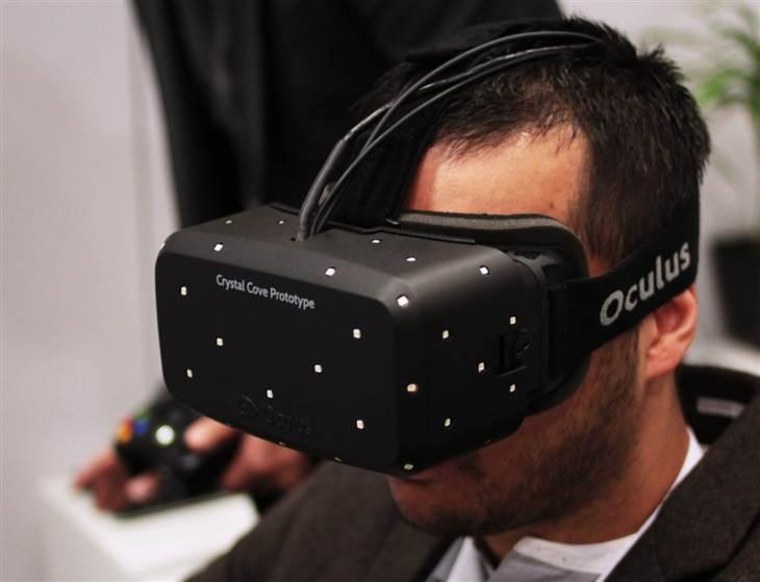People who tried the original Oculus Rift virtual reality headset, which tracks your movements to let you look around a 3-D world, might reasonably have come away unconvinced – or dizzy. But the company (now $75 million and one John Carmack richer) listened to feedback and has produced a new headset code-named "Crystal Cove" — and it improves on every single aspect of the original. Skeptics beware.
The new device has a higher resolution, for one thing, but more importantly, the company switched to an OLED (organic light-emitting diode) display inside the goggles. OLEDs have better contrast and color, and the pixels change from on to off almost instantly, reducing the lag between moving and seeing that movement reflected on-screen.
In addition, the outside of the unit is studded with infrared LEDs, the positions of which are tracked by a camera near the TV. Combined with the accelerometers in the headset, this allows the system to track the user's head position with extreme precision. In the cockpit of the "EVE Valkyrie" space dogfighting game demo, I could lean forward the virtual equivalent of two feet or so to closely inspect some floating readouts, and twist around backward to track a passing enemy ship.

Lastly, on the software side, Oculus representatives explained that they'd succeeded in creating what they call a "low persistence" display. Normally, when you turn your head in a head-tracking display, there's both motion blur and lag. Some of that comes from the pixels not being able to change colors fast enough to keep up with the scene's movement, but as the team put it, "there's a perceptual aspect as well."
The thing is, when you turn your head, the view you're being shown is also a little behind what your mind expects to see — what it would see in reality. The Oculus team has learned to detect when this is the case, and uses the quick refresh rate of the OLED display to simply black out for a fraction of a second, and show the scene only when it's displaying what your eyes should see.
It's difficult to explain, but easy to appreciate in practice. With low persistence off, text and details were blurry when I turned my head. With it on, it stayed sharp (it was slightly dimmer, though no flicker was perceptible). That and the improved clarity and head tracking make the experience far, far more comfortable and immersive. Another person testing the headset reported that on the old one, he had felt nauseated after 30 seconds or so, but in the new one he didn't feel the slightest discomfort.
There are only a handful of Crystal Cove headsets in existence, and Oculus is working hard on ironing out the problems, allowing for different types of eyesight problems, and so on. It'll be a while before you see it in production, but it may be available to test at shows and events before then, so keep your eyes out for a chance to put your eyes in an Oculus Rift.
